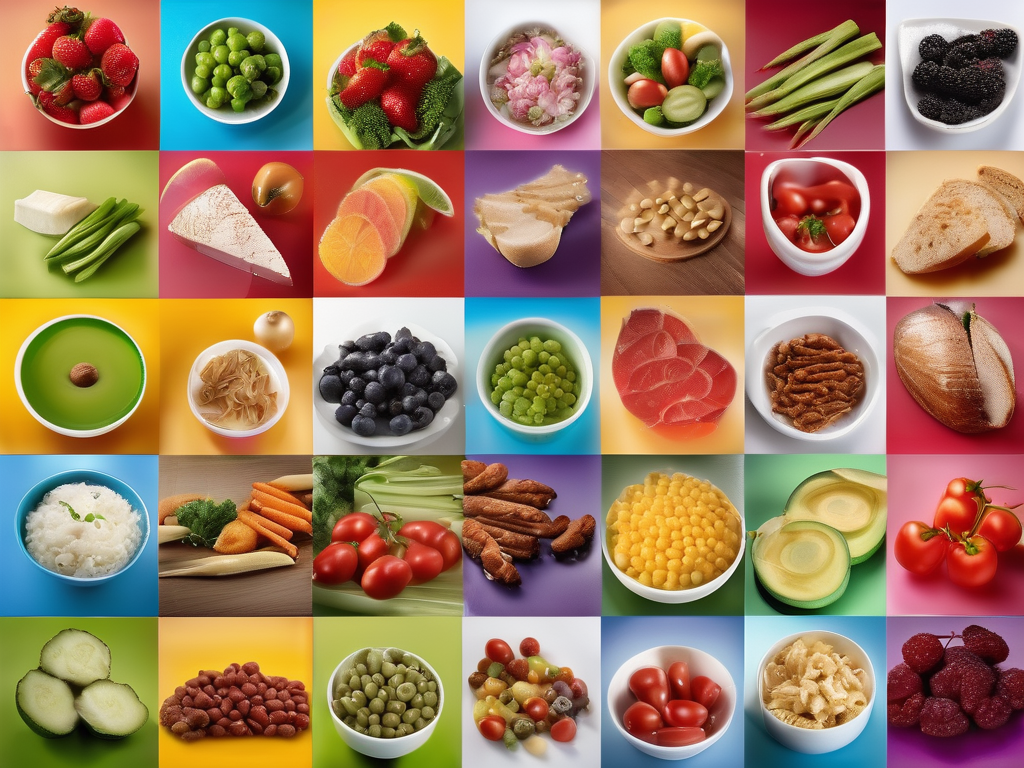
Understanding Shelf Life: A Comprehensive Guide to Food Safety and Storage
Get Your Free Food Safety Cheat Sheet
30 most common foods with instant answers. Print it and stick it on your fridge—completely free!
Understanding Shelf Life: A Comprehensive Guide to Food Safety and Storage
In today's fast-paced world, understanding the concept of shelf life is crucial for maintaining food safety and quality. Whether you are a seasoned cook, a busy parent, or a health-conscious individual, knowing how long your food can be stored before it goes bad can help prevent foodborne illnesses and reduce food waste. In this guide, we will delve into what shelf life means, factors that influence it, and practical tips for extending the shelf life of your food items.
What is Shelf Life?
Shelf life refers to the length of time that a food product can be stored under specific conditions while maintaining its quality and safety for consumption. It is influenced by various factors such as the type of food, packaging, storage temperature, and humidity. Understanding the shelf life of different food items can help you make informed decisions about purchasing, storing, and consuming them.
Factors Influencing Shelf Life
Several factors can impact the shelf life of food products. It's essential to consider these factors when storing food items to maintain their quality and safety:
-
Type of Food: Different types of food have varying shelf lives. Perishable items like dairy products, meat, and seafood have shorter shelf lives compared to canned goods and dry pantry staples.
-
Packaging: The type of packaging used can affect the shelf life of a product. Proper packaging helps protect food from moisture, oxygen, light, and contaminants, extending its shelf life.
-
Storage Temperature: Temperature plays a critical role in food preservation. Storing food at the correct temperature can slow down the growth of bacteria and extend its shelf life.
-
Humidity: High humidity levels can promote mold growth and spoilage, reducing the shelf life of certain food items.
-
Handling and Hygiene: Proper handling and hygiene practices, such as washing hands before handling food and using clean utensils, can prevent contamination and extend the shelf life of food products.
Tips for Extending Shelf Life
To maximize the shelf life of your food items and reduce food waste, consider the following tips:
-
Proper Storage: Store perishable items in the refrigerator or freezer promptly to maintain freshness.
-
Check Expiry Dates: Regularly inspect the expiry dates of food products and consume them before they expire.
-
Use Airtight Containers: Transfer leftovers to airtight containers to prevent exposure to air and extend their shelf life.
-
Rotate Stock: Practice the "first in, first out" rule when organizing your pantry to ensure that older items are used before newer ones.
-
Follow Storage Guidelines: Adhere to storage guidelines provided on food packaging to maintain the quality and safety of the product.
Food Safety and Shelf Life
Ensuring food safety goes hand in hand with understanding shelf life. By following proper food safety practices, you can prevent foodborne illnesses and maintain the freshness of your food items. Here are some essential food safety tips to consider:
-
Wash Hands Thoroughly: Always wash your hands with soap and water before handling food to prevent the spread of bacteria.
-
Separate Raw and Cooked Foods: Keep raw meats and seafood separate from ready-to-eat foods to avoid cross-contamination.
-
Cook Food Thoroughly: Cook food items, especially meat, poultry, and seafood, to their recommended internal temperatures to kill harmful bacteria.
-
Refrigerate Promptly: Refrigerate perishable items within two hours of purchase or preparation to prevent bacterial growth.
-
Clean and Sanitize: Regularly clean and sanitize kitchen surfaces, utensils, and cutting boards to prevent the spread of harmful bacteria.
Conclusion
Understanding shelf life is essential for maintaining food safety, reducing food waste, and ensuring the quality of the food you consume. By considering factors that influence shelf life, following storage guidelines, and practicing proper food safety measures, you can prolong the shelf life of your food items and enjoy them safely. Remember to regularly inspect and rotate your food stock, adhere to storage recommendations, and prioritize food safety in your kitchen practices. By taking proactive steps to extend the shelf life of your food items, you can promote a healthier and more sustainable approach to food consumption.
Authoritative Food Safety References
These agencies and university labs inform every tip and health precaution we publish.
USDA FoodKeeper – Cold Storage Guidelines
Official refrigerator, freezer, and pantry timelines maintained by the U.S. Department of Agriculture.
Visit USDA FoodKeeperFDA Produce Safety Rule & Grower Guidance
Field-to-fridge handling practices that prevent contamination of fruits, vegetables, and leafy greens.
Visit FDA Produce SafetyCDC Foodborne Illness Prevention Hub
Surveillance-backed guidance on pathogens, symptoms, and steps to reduce foodborne illness risk.
Visit CDC Food SafetyUC Davis Postharvest Technology Center
University research detailing optimal storage atmospheres for produce after harvest.
Visit UC Davis PostharvestPenn State Extension – Home Food Preservation & Safety
Peer-reviewed extension bulletins on safe canning, chilling, and reheating practices.
Visit Penn State ExtensionGet Your Free Food Safety Cheat Sheet
30 most common foods with instant answers. Print it and stick it on your fridge—completely free! Want more? Upgrade to the complete guide with 70+ foods.
Scan your food directly and get instant safety info using our AI-powered camera feature.